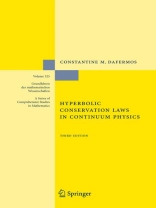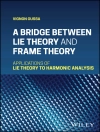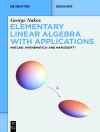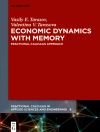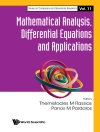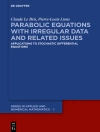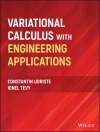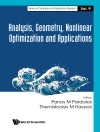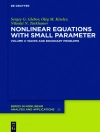The aim of this work is to present a broad overview of the theory of hyperbolic c- servation laws, with emphasis on its genetic relation to classical continuum physics. It was originally published a decade ago, and a second, revised edition appeared in 2005. It is a testament to the vitality of the ?eld that in order to keep up with – cent developments it has become necessary to prepare a substantially expanded and updated new edition. A new chapter has been added, recounting the exciting recent developmentsin classical open problems in compressible ?uid ?ow. Still another – dition is an account of the early history of the subject, which had an interesting, – multuous childhood. Furthermore, a substantial portion of the original text has been reorganized so as to streamline the exposition, update the information, and enrich the collection of examples. In particular, Chapter V has been completely revised. The bibliography has been updated and expanded as well, now comprising over – teenhundred titles. The background, scope, and plan of the book are outlined in the Introduction, following this preface. Geometric measure theory, functional analysis and dynamical systems provide the necessary tools in the theory of hyperbolic conservation laws, but to a great – tent the analysis employscustom-madetechniques, with strong geometric?avor, – derscoring wave propagation and wave interactions. This may leave the impression that the area is insular, detached from the mainland of partial differential equations.
Cuprins
Balance Laws.- to Continuum Physics.- Hyperbolic Systems of Balance Laws.- The Cauchy Problem.- Entropy and the Stability of Classical Solutions.- The Theory for Scalar Conservation Laws.- Hyperbolic Systems of Balance Laws in One-Space Dimension.- Admissible Shocks.- Admissible Wave Fans and the Riemann Problem.- Generalized Characteristics.- Genuinely Nonlinear Scalar Conservation Laws.- Genuinely Nonlinear Systems of Two Conservation Laws.- The Random Choice Method.- The Front Tracking Method and Standard Riemann Semigroups.- Construction of Solutions by the Vanishing Viscosity Method.- Compensated Compactness.- Conservation Laws in Two Space Dimensions.
Despre autor
Professor Dafermos received a Diploma in Civil Engineering from the National Technical University of Athens (1964) and a Ph.D. in Mechanics from the Johns Hopkins University (1967). He has served as Assistant Professor at Cornell University (1968-1971), and as Associate Professor (1971-1975) and Professor (1975- present) in the Division of Applied Mathematics at Brown University. In addition, Professor Dafermos has served as Director of the Lefschetz Center of Dynamical Systems (1988-1993, 2006-2007), as Chairman of the Society for Natural Philosophy (1977-1978) and as Secretary of the International Society for the Interaction of Mathematics and Mechanics. Since 1984, he has been the Alumni-Alumnae University Professor at Brown.
In addition to several honorary degrees, he has received the SIAM W.T. and Idalia Reid Prize (2000), the Cataldo e Angiola Agostinelli Prizeof the Accademia Nazionale dei Lincei (2011), the Galileo Medal of the City of Padua (2012), and the Prize of the International Society for the Interaction of Mechanics and Mathematics (2014). He was elected a Fellow of SIAM (2009) and a Fellow of the AMS (2013). In 2016 he received the Wiener Prize, awarded jointly by the American Mathematical Society (AMS) and the Society for Industrial and Applied Mathematics (SIAM).
